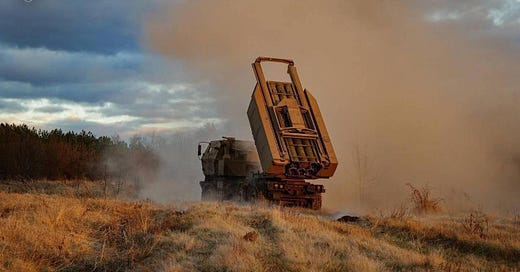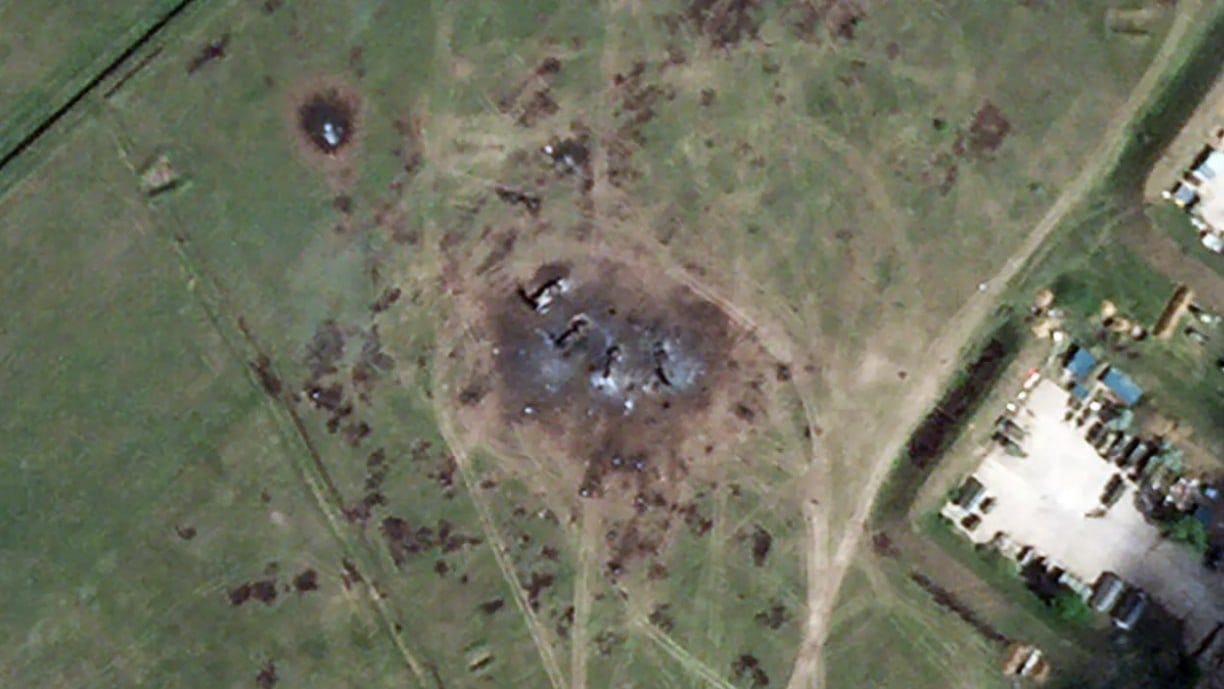The Ukrainians Are About to Get a Lot More American-Made ATACMS Rockets. The Russians Are Worried.
Evey time the Ukrainian military fires ATACMS, the Russian military loses a lot of equipment.
Six months after blocking further U.S. aid to Ukraine at the behest of a pro-Russian fringe of the majority Republican Party, Speaker of the U.S. House of Representatives Mike Johnson finally relented to intense private and public pressure—and put Pres. Joe Biden’s languishing aid proposal to a vote.
It passed with an overwhelming majority, clearing the way for the U.S. Senate to clear the bill—and for Biden to sign it—as early as Tuesday.
Russian propagandists had celebrated the long delay. Now they’re panicking over its abrupt end. “Our only hope—if Russia does not fall apart—is that Ukraine becomes part of NATO so they can restrain the Ukrainians from marching on Moscow to reclaim their territories,” one Russian blogger hyperventilated.
To be clear, the Ukrainians will not be marching on Moscow. Their priority, as the $61 billion in fresh U.S. aid begins to flow, will be to stabilize the front line in eastern Ukraine with additional artillery ammunition while also reinforcing the air-defenses around major cities.
But the Russians would be right to worry about one provision of the U.S. aid bill. It requires Biden to send additional Army Tactical Missile System rockets on top of the two batches of ATACMS he sent last fall and earlier this year. U.S. senator Mark Warner said the rockets would ship by the end of next week.
Every time the Ukrainian army has fired the 100-mile-range ATACMs from their wheeled and tracked launchers, the Russians have lost a lot of equipment.
ATACMS comes in several models; the one the Ukrainians so far have received—the two-ton, inertial-guided M39—scatters nearly a thousand submunitions across tens of thousands of square feet. Each submunition packs the explosive power of a hand grenade.
Worse for the Russians, their air-defenses can’t seem to intercept an ATACMs.
The first major ATACMS raid, on Oct. 17 attack, reportedly saw three of the M39s strike airfields outside Berdyansk, in southern Ukraine, as well as in Luhansk Oblast in the east. The attacks destroyed or badly damaged 21 Russian helicopters, according to an analysis of commercial satellite imagery by GeoConfirmed.
“This is probably the biggest blow to the Russian air force since the beginning of the war,” GeoConfirmed commented.
In the second major strike, on Oct. 25, the Ukrainian army’s rocketeers targeted a Russian air force S-400 air-defense battery in Luhansk Oblast in eastern Ukraine.
Videos and photos from Luhansk depicted the detached tail sections of two M39s—and also the aftermath of the purported strike: smoke curling from what Russian social-media users identified as an S-400.
The Ukrainians got only 20 or so M39s in that first batch in October 2023, and expended all of them within weeks. On March 12, the Biden administration unexpectedly gifted to Ukraine a $300-million consignment of weapons it paid for with savings from a separate weapons contract it had negotiated on Ukraine’s behalf.
The consignment included a few M39s. On April 16, the Ukrainian put the rockets to good use: firing eight of them at Dzhankoy air base, south of the front line in Russian-occupied Crimea.
Imagery from the ground at Dzhankoy confirmed the Russians lost at least four launchers belonging to an S-400 battery. The Ukrainian defense ministry claimed the rockets also knocked out the S-400’s control center and four precious air-defense radars.
Average it out. Every time the Ukrainians have launched ATACMS, the Russians have lost multiple helicopters or precious air-defense equipment. If fewer than 30 M39s can wreck up to 21 ’copters and the better part of two S-400 batteries, how many batteries and rotorcraft would the Russians lose if the Ukrainians had hundreds of M39s?
It’s in the cards. The U.S. Army bought more than a thousand M39s through the early 2000s, and fired a few hundred in combat. The rest are about to expire as their solid rocket motors wear out. There’s no reason the White House couldn’t send all of the remaining missiles to Ukraine.
The resumption of U.S. aid to Ukraine, combined with a surge in aid from European countries, promises to re-arm weary Ukrainian brigades at a critical moment in Russia’s 26-month wider war on Ukraine. Russian regiments are attacking, but heavy losses have made them fragile. They utterly depend on air support for whatever gains they achieve.
But that air support—and the air-defense network that protects it—is vulnerable to deep-strike munitions such as the M39. We don’t have to guess that, re-armed with a large consignment of M39s, the Ukrainians would target Russian air bases and air-defense sites. That’s exactly what they’ve done, like clockwork, with every previous batch of ATACMS.
All that is to say, expect a lot of damage to a lot of vital Russian equipment—and soon. That certainly is what the more panicky Russians expect as American weapons begin to arrive at the front.
Read more:
Ukrainian Missiles and Drones Are Dismantling Russian Air-Defenses—And Making Subsequent Raids Even Easier
Prior to its wider war on Ukraine, Russia deployed five batteries of its best S-400 surface-to-air missiles, plus their radars and command posts, to occupied Crimea. In the 26 months since the Russians attacked, Ukrainian forces have struck at least three of those bat…







